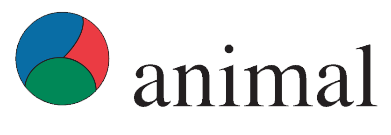Document type: scientific journal published in Animal
Authors: L. Aubé, M.M. Mialon, E. Mollaret, L. Mounier, I. Veissier, A. de Boyer des Roches
Preview: Pasture is generally perceived as positive for dairy cow welfare, but it nevertheless exposes cows to heat, parasites, and other challenges. This review is intended for people ready to design comprehensive proto-cols for assessing the welfare of dairy cows at pasture. We provide an overview of the benefits and risks of pasture for cows, and then go on to identify the available and feasible measures for assessing cow welfare at pasture and the gaps that need to be addressed to develop specific welfare measures. Some of the measures from on-farm welfare assessment protocols designed for indoor use (e.g. Welfare Quality (R)) are relevant for cows at pasture (e.g. lameness scoring). However, the timing, location and/or method for certain measures (e.g. observation of social behaviour) need to be adapted to the pasture context, as cows at pasture can roam over a large area. Measures to address specific pasture-related risks (e.g. heat stress, biosecurity) or benefits (e.g. expression of a wide range of behaviours) should be implemented in order to capture all dimensions of cow welfare at pasture. Furthermore, cow welfare is liable to vary over the grazing season due to changes in weather conditions, grass quality and pasture plots that induce variations in lying surface conditions, food availability, distance to walk to the milking parlour, and so on. It is there-fore important to investigate the variability in different welfare measures across the pasture season to check whether they hold stable over time and, if not, to determine solutions that can give an overview across the grazing season. Sensors offer a promising complement to animal and environment observations, as they can capture long-term animal monitoring data, which is simply not possible for a one -day welfare-check visit. We conclude that some measures validated for indoor situations can already be used in pasture-based systems, while others need to be validated for their fitness for purpose and/ or use in pasture conditions. Furthermore, thresholds should probably be determined for measures to fit with pasture contexts. If all measures can be made adaptable to all situations encountered on farms or variants of the measures can at least be proposed for each criterion, then it should be possible to produce a comprehensive welfare assessment protocol suitable for large-scale use in near future.






